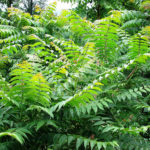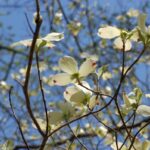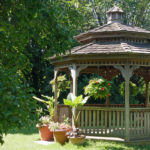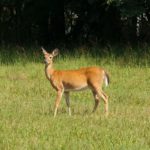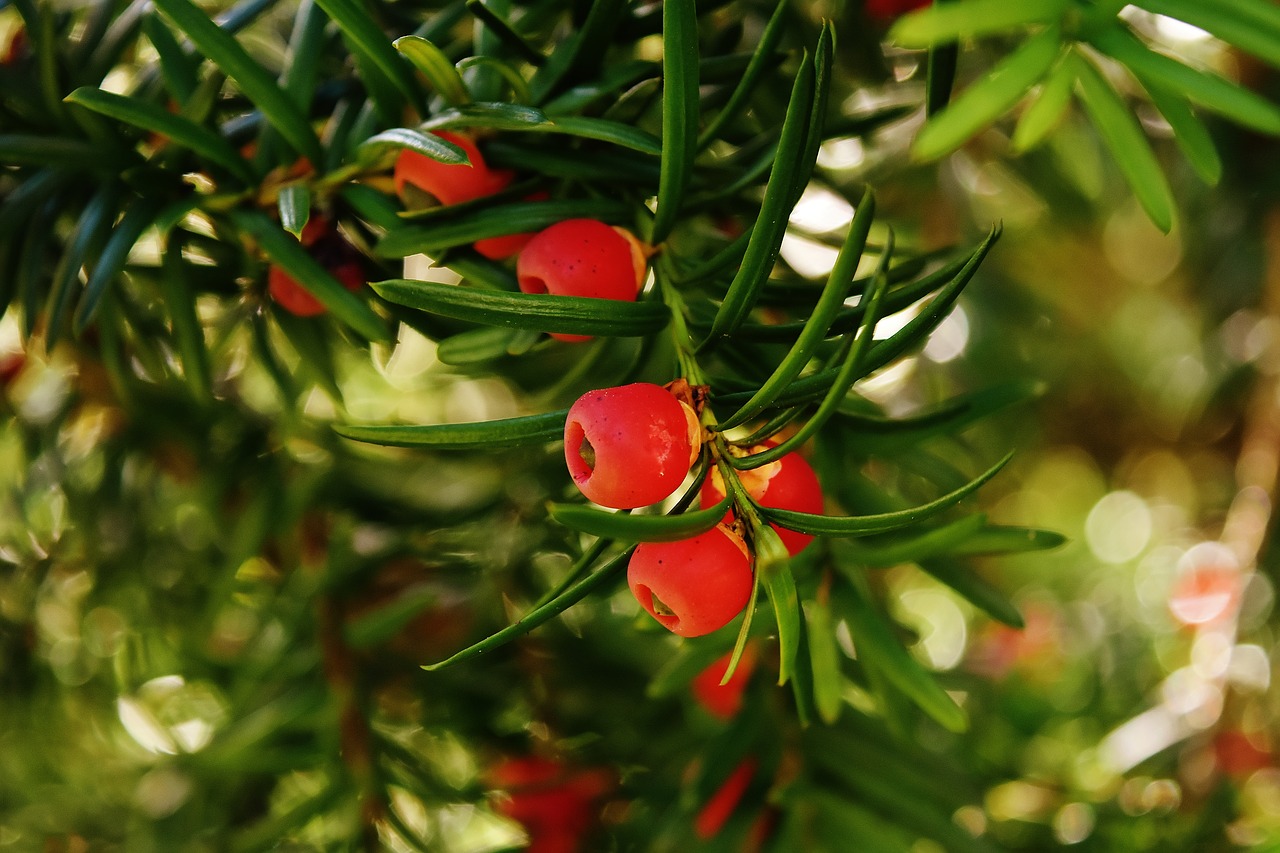
From ancient Rome to the Druids of England, yews have played a role in human culture. Early Christian churches in England were built in yew groves since the trees are a symbol of longevity and immortality. In medieval times, yew wood was the primary source for bows and arrows.
Today, the lustrous dark evergreens are a landscaping staple. They are, in fact, the most popular evergreens in the state of Missouri. There are three main yew species with various cultivars, many of which are well-suited to Kansas City. It can be challenging to narrow down the right species for your property, as their sizes and tree care needs can vary, so we made a list to help.
Canadian Yew
Taxus canadensis
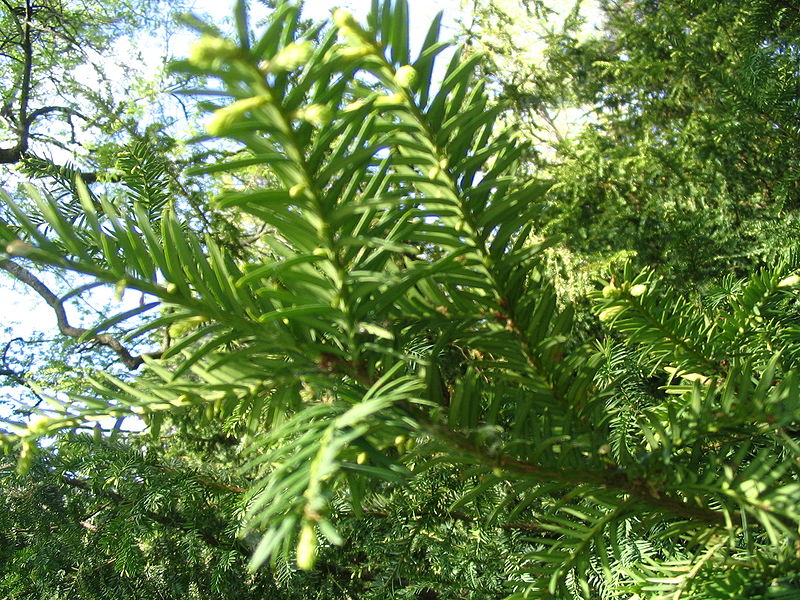
This is a native North American yew species found growing from Virginia to the Great Lakes Forest. Naturally compact, this yew reaches about 3 to 4 feet in height. The Canadian yew isn’t often used in landscaping, due to its low and loose spreading form, But, it makes a lovely understory plant and functions as a ground cover in the shade of larger canopy trees.
English Yew
Taxus baccata
This classic yew is hardy as far north as Boston. Reaching heights of 30 to 60 feet with a width to match, English yews do well in part shade.
T. baccata X ‘Repandens’
The hardiest cultivar of the species, ‘Repandens’ is a low, sprawling shrub that grows up to 20 feet wide but only five feet tall.
T. baccata X ‘Standishii’
This columnar, yellow-needled yew grows to a mature height of only four or five feet and retains its yellow color all year. For the best foliage color, plant in a sunny location.
Stove pipe Taxus x media
Resembling a stove pipe when young, the mature form of this variety is 10-12 feet tall with a 4-6 foot spread.
Japanese Yew
Taxus cuspidata
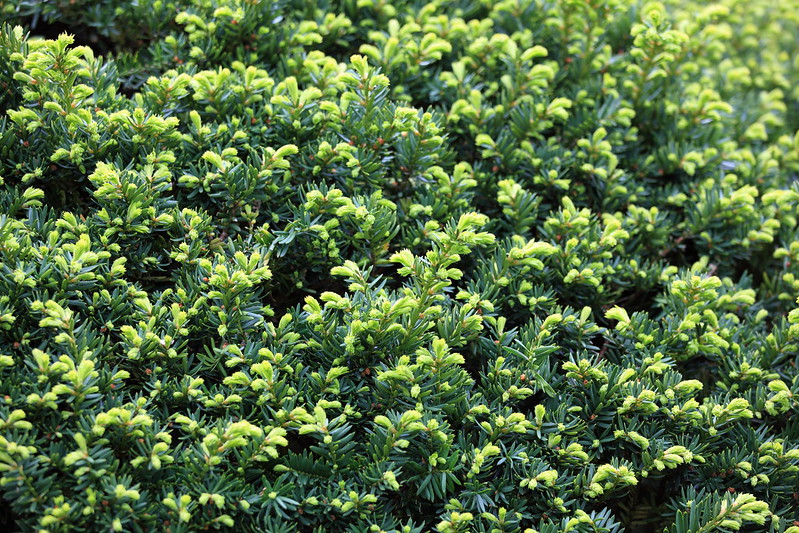
Originally brought to the United States in the 1860s, the Japanese yew is extremely hardy and can reach heights from 30 to 60 feet. But, with regular pruning, these evergreens can be kept much smaller, making them excellent hedge shrubs.
Bright Gold T. cuspidata
A slow-growing, shrubby, upright dwarf form, “bright gold” grows to 3 feet tall and equally wide in 10 years. It can grow to 6 feet over time and has striking, bright golden-yellow foliage in spring that darkens to green in summer. This cultivar performs best in full morning sun and part shade in the afternoon.
Densa T. cuspidata
A shrubby, dwarf, upright-spreading yew that is rather slow-growing. It reaches 4 feet in height and spreads twice as wide in 40 to 50 years. Deep green offers year-round seasonal interest and red berries ripen in the fall.
Hybrid Yews Taxus X media
By far, the most popular yews are the Anglojapanese cultivars. They’re the hardiest and most versatile and easily adapt to Midwest conditions.
Taxus x media ‘Brownii’
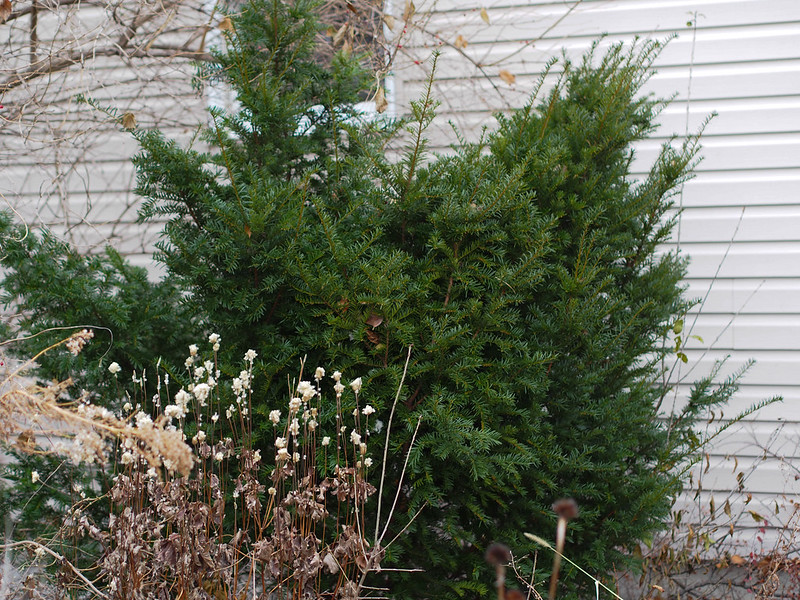
Growing 8-10 feet tall and up to 12 feet wide, “Brownii” is a dense, rounded yew that makes a great hedge. A male clone, this variety produces no fruits.
Beanpole yew Taxus x media
An upright, columnar yew, “beanpole” grows to 10 feet tall and 4-6 feet wide over 20 years. This is an ideal screening shrub.
Citation Taxus x media
“Citation” is particularly well-suited to the Kansas City area. With a tight, columnar form, this variety matures to between 6 and 10 feet tall. It features dark, linear, pointed needles that are beautiful year-round.
Taxus x media ‘Hatfieldii’
The tallest of the hybrids, this yew can grow up to 30 feet, though most are 15 feet tall and 8-10 feet wide at maturity. Hatfield yews can be used to form a tall hedge or as foundation plantings.
Yew Considerations
While yews are cold-hardy, they are not without their sensitivities. The trees prefer slightly alkaline, well-drained soil, and will not tolerate poorly-drained, overly wet, or acidic soil. ‘They can be burned by harsh winter winds and by the scorching sun. It’s best to plant yews in conjunction with other trees so they can benefit from shade during the hottest part of the day. Yews are very sensitive to salt spray, so avoid planting them near the street.

Kansas State University Extension agent Dennis Patton reminds us pruning yews is the key to maintaining their form. “Yews can be pruned in late April through June,” he says. “It’s best to prune gently, focusing on the new growth.” He suggests looking at the structure of the plant and trying to maintain the natural shape, rather than pruning it into harsh geometric forms. Over-pruning can lead to having to remove an entire plant. Patton cautions, “It may take a few years for them to recover fully from years of bad pruning practices.”
Yews are beautiful, traditional evergreens that add texture, color, and foundation to your landscape. Choose wisely, plant intelligently, and care for them, and they’ll contribute to your landscape for decades to come.
Dennis Patton is a Horticulture Agent with the Kansas State Extension office. He specializes in ornamental trees and shrubs and has experience with commercial agriculture. He grew up on a farm and developed a love of nature and plants from his grandmother, an avid gardener.
